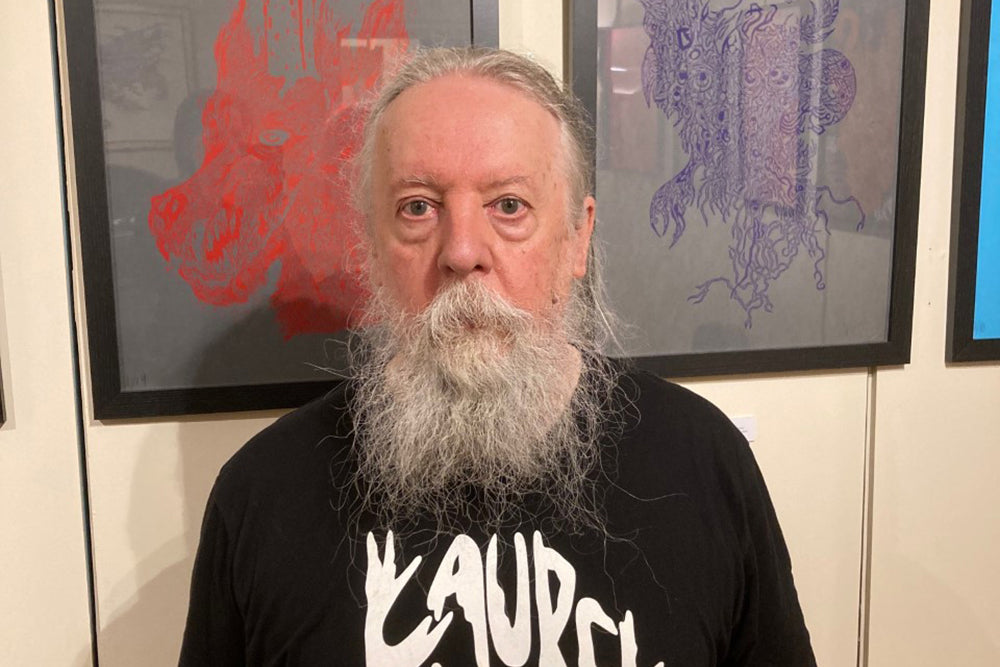
Savage Pencil, Ambit
Artist Savage Pencil made his name in the 1980s at Sounds magazine, one of the trio of British weekly music tabloids that kickstarted so many publishing careers.
Trained as a graphic designer, Savage—aka Edwin Pouncey—designed and sub-edited pages at Sounds but was best known for creating the legendary ‘Rock n Roll Zoo’ comic strip. He has continued to create artworks for magazines since, and has just guest edited Ambit Pop #247, a project that allowed him to indulge his love for music, comics and the occult.
As he shares his week ahead, we get a sense of his working life as well as hear how he came to guest edit Ambit.
What are you up to this morning?
As always, my morning begins with me answering any emails that might have arrived overnight—while drinking a reviving cup of tea. These are usually from America and so I rattle back something before starting work on a new project.

Describe your desk and work space.
It’s mostly cluttered up with papers, drawing pads, books, magazines and various ephemera that I need to hand. It’s a mess, but if it was neat and tidy I would freeze up and not do anything. In this instance chaos is good.

What’s the view from your window?
I have no view from my work space. It’s just me sitting in a room surrounded by various objects.
What’s the atmosphere like?
One of contented clutter.
What music do you play while working?
It all depends on what mood I’m in and what music I am interested in at the time. At the moment I am listening to the Grateful Dead playing live at London’s Lyceum in 1972. When working I tend to like music that is long, winding and explorative so that I can ease myself into a state of concentration.
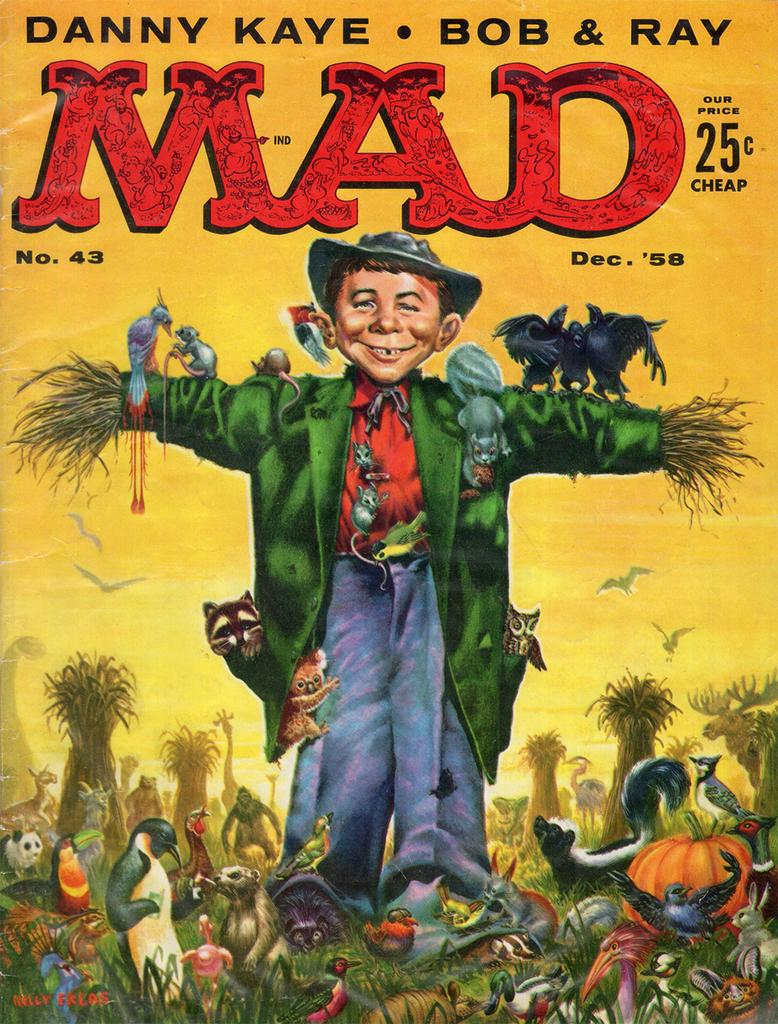
The December 1958 issue of Mad magazine
Which magazine do you first remember?
Mad magazine. Issue one with a portrait of Alfred E. Neuman on the front cover.

Which magazine matters to you the most this morning?
I am currently reading a collection of back issues of The Comics Journal with lengthy and detailed interviews from such underground comix and poster artists as Kim Deitch, S. Clay Wilson and Victor Moscoso.
All of these artists (and many others) have been influential to me in my own work as a cartoonist and illustrator. I found this stash of Comics Journal magazines at a comic shop the other day and I have been glued to them for most of the week.
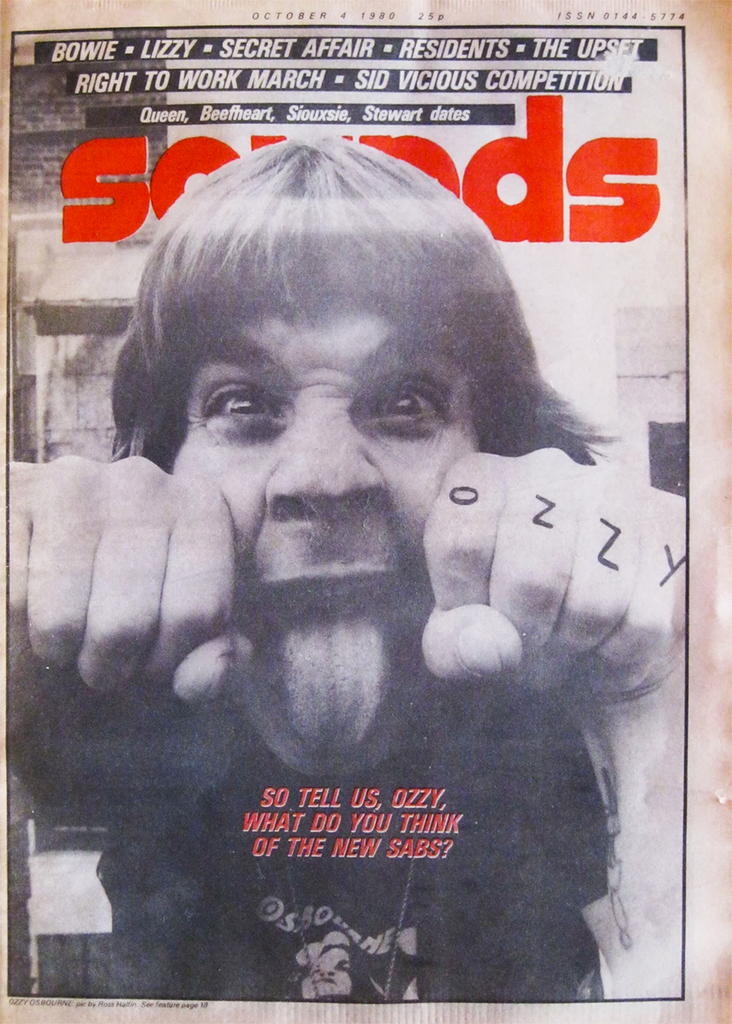
How did you first become involved with magazines?
Working at my father’s newsagent shop in the 1960s first alerted to me to the joy and design power of the magazine format. As I was surrounded by magazines that covered a wide variety of subjects, together with American imported magazines and comics, I was lucky enough to be able to absorb a lot of visual material into my hyperactive teenage consciousness. I maintain that the stock in my father’s shop was the main influence that guided my career – especially as a comics artist.
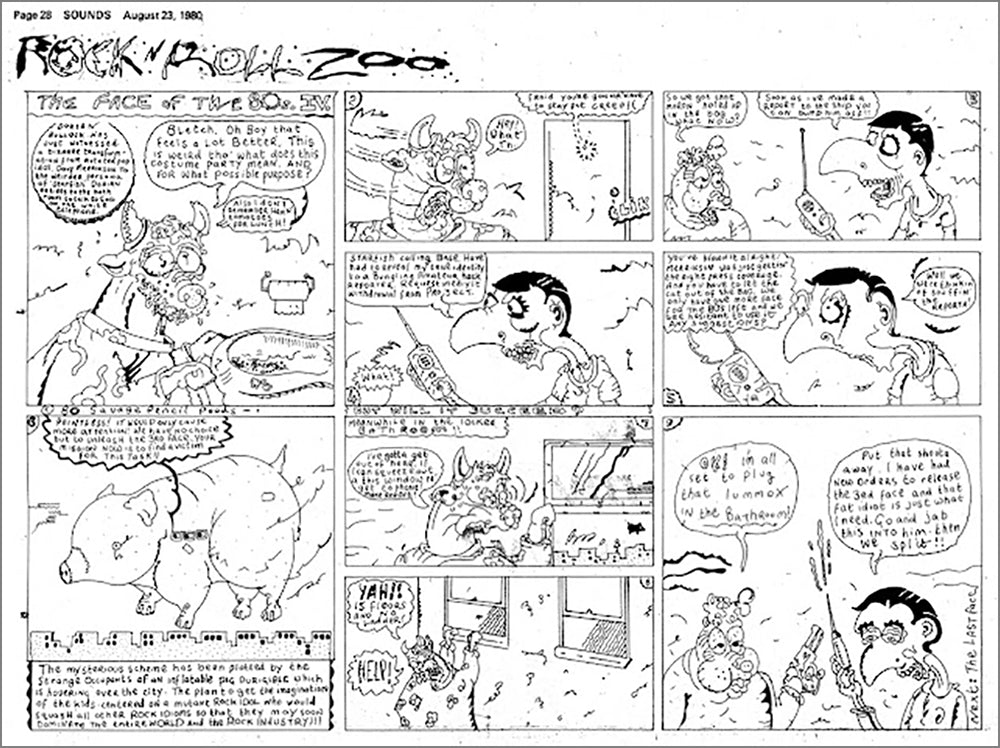
I eventually got hired by UK music paper Sounds to draw a regular comic strip for them called Rock ‘N’ Roll Zoo (above). I went on to land a full-time job with Sounds in the early 80s as layout artist, and this continued for a few years until I decided that the best way forward was to go freelance. The office environment never really appealed to me and I could feel that it was slowly driving me crazy.
Since then I have worked on various music magazines as writer and artist. For several decades I have been writing features and record reviews, and drawing illustrations for the Wire, a magazine that covers the global experimental music scene. I have just guest edited the latest issue of literary/arts journal Ambit.

How did you come to be invited to guest edit the issue?
I bumped into Ambit editor Kirsty Allison at a record fair last October and she asked me if I would be interested in doing some drawings that would run through the pages of the next issue. I told her that I would and maybe we could talk about it in more detail at some point.

Nothing happened for quite a while, and then Kirsty got back to me with an invitation to be guest editor for Ambit Pop #247. Although I had no real experience at editing an entire magazine by myself, I thought the challenge would be interesting and so I agreed to do it. Glad I did too, as the experience was massively illuminating, thrilling and creatively rewarding.
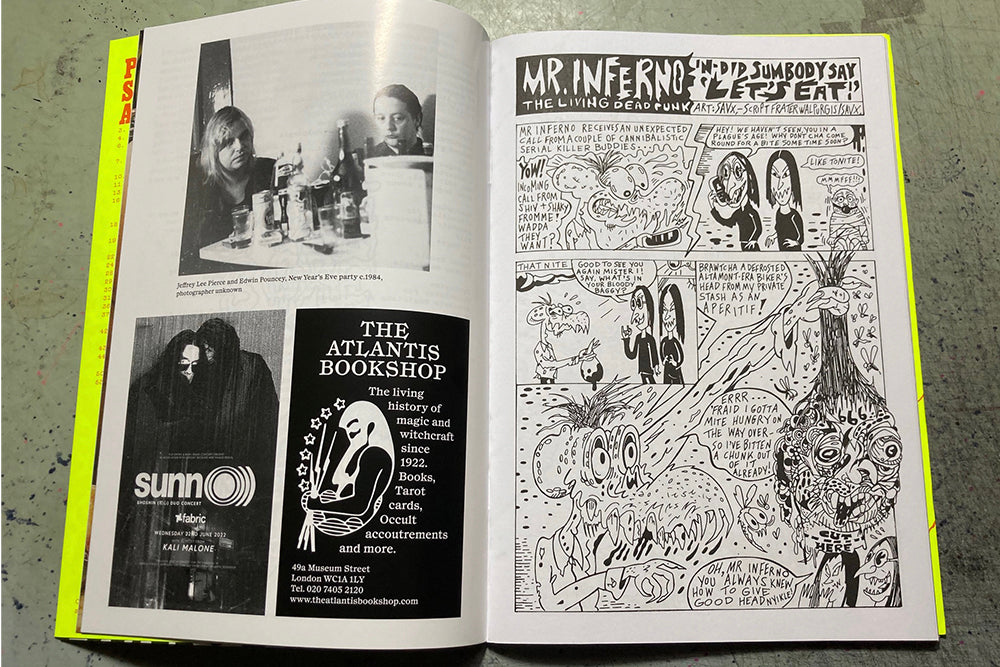
In the end very little editing had to be done as the work that came through was as good as I had expected it would be. Very little alteration was made to the contents. The issue was overseen by Kirsty and designer Stephen Barrett who put it all together. Stephen did a great job and was extremely supportive of my design ideas, while still maintaining his own vision of how the magazine should look overall.
Instead of choosing celebrity contributors, I decided to ask more obscure poets, artist and writers I knew who I felt could bring something special and individual to the contents of the magazine. Don’t get me wrong, all of them are celebrities in their own right, but what following they have tends to be on a more subterranean level. That said, poet (and neighbour) Aviva Dautch is a rising star in poetry circles and her contribution of three magnificent poems is a high point.
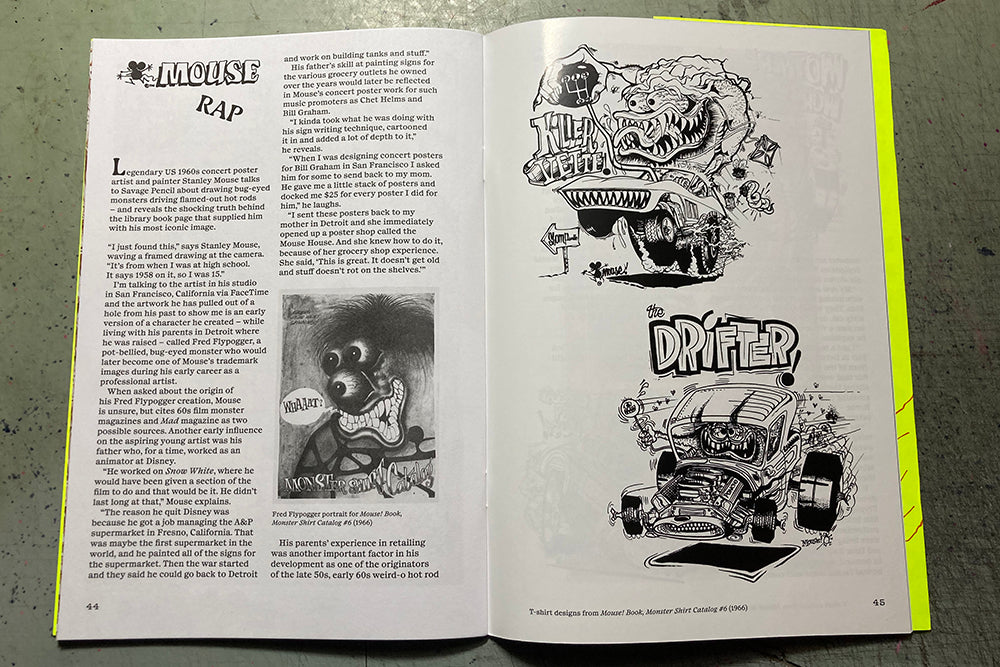
Highlight one story that sums up your version of the magazine.
Being given the opportunity to interview San Francisco poster artist Stanley Mouse gave me the biggest thrill (above). Since childhood I have been fascinated by his monster hot rod art, and later his work for the great San Francisco bands of the 60s. He is somewhat reclusive, so getting him to agree to an interview for a magazine he has probably never heard of—as well as allowing his art to be reproduced—was a real coup.
Stanley Mouse was the creator of some of the quintessential images of the San Francisco 60s rock scene, and to be able to discuss his work with him was both a privilege and an honour. This alone made the Ambit gig worth doing, and thanks to Kirsty, Peter McQuaid and everybody else involved we got it out there. The interview represents the underground flame still flickering in the pages of the magazine I was asked to guest edit

Savage Pencil with Ambit editor Kirsty Allison on Margate Beach
You’ve taken the issue on tour… describe that experience.
In July we took the Ambit POP 247 experience on a short tour of the South coast, playing venues at Brighton, Hastings and Margate. The idea was to break free from the printed version and make it a live experience with a film, live poetry readings, music and word workshops where the audience could become involved with the action.
The reaction to this was very positive and we hoped to take it to Rough Trade East in London. Unfortunately this had to be postponed due to the heatwave, but the date has now been rescheduled at the same venue for September 21st .
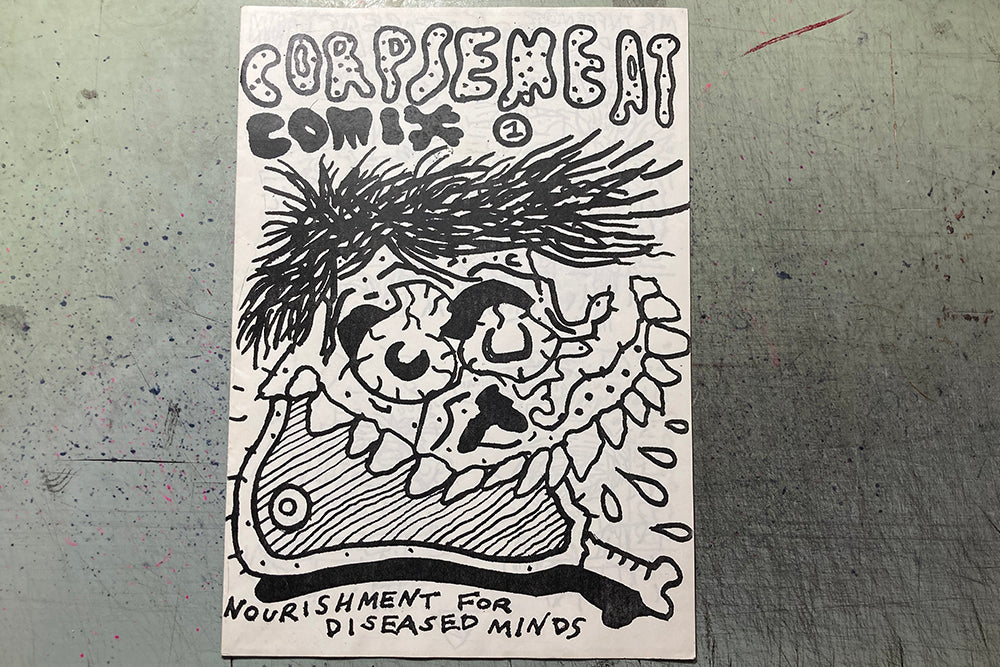
What one piece of advice would you offer somebody wanting to launch their own publication? Have you ever done that?
In the 70s I published Corpsemeat Comix, a punk rock underground comic that I just needed to get out of my system. The ambitious run of 500 copies took over two years to dribble away, but eventually they all found a home somewhere.
At that time there was no internet, so opportunities to let people know that my comic existed were pretty limited. Nowadays the whole world can be informed, but the point is that you have to want to get something out there that is important to you. I’d just say, if it feels right go for it.
What are you looking forward to this coming week?
Getting on with the next project, whatever it might be.


